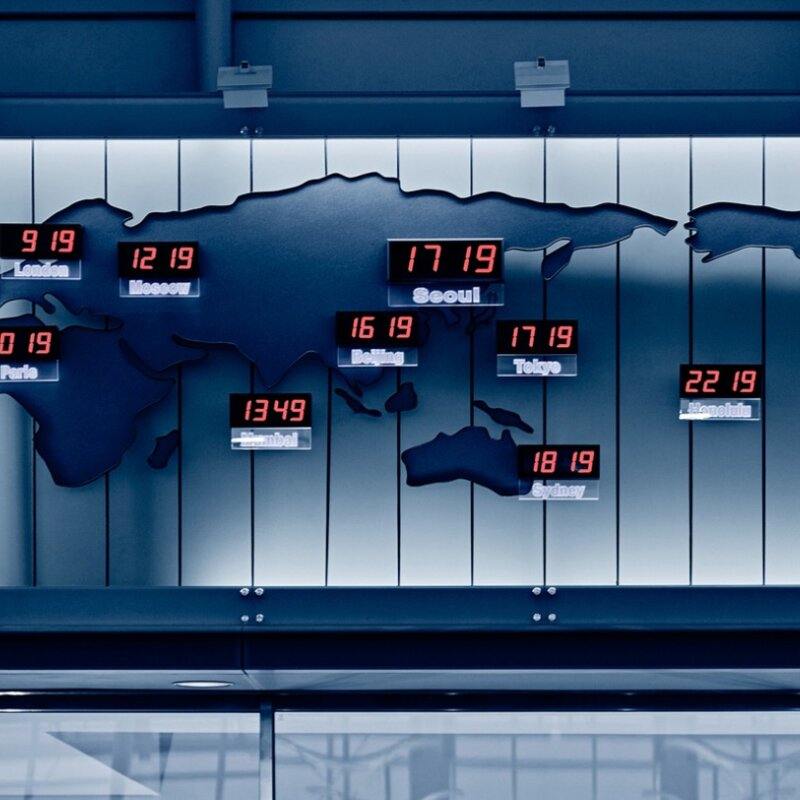
Providing reliable support to orbital-based time and frequency dissemination
Challenge
Time and frequency dissemination plays a central role in location services, commercial and financial transactions, communication systems such as 5G and the internet, as well as providing a frequency reference used in electricity grids. The most widespread way this is done is via Global Navigation Satellite Systems (GNSS). In Europe, this is the European Commission’s European Space Agency’s (ESA) network of Galileo satellites. Comprised of 30 satellites equipped with atomic clocks, this network sends time and frequency information from 20,000 km above the Earth to receiver stations on the ground. The timing data is then synchronised against Coordinated Universal Time (UTC) that is compiled from around 450 atomic clocks at 80 locations around the world, adjusted for the Earth’s rotation.
Although the Galileo network delivers the most accurate timing and positioning signals available, these are relatively weak and prone to interference from ‘space weather’ such as solar flares, or deliberate acts of ‘spoofing’ or ‘jamming’.
In addition, many of the network’s ground components require continuous calibration to maintain accuracy. In response ESA has begun steps to upgrade the network to a second generation of satellites (G2) including calls for an assessment of the resilience and accuracy of new ground-based elements.
Solution
The White Rabbit Precision Time Protocol (WR-PTP) is a resilient, Ethernet-based system capable of distributing time with nanosecond accuracy over optical fibre. Whilst WR-PTP had been demonstrated over dedicated fibre links, there was a need for improved scalable calibration techniques along with a demonstration of its accuracy and stability to industry.
During the WRITE project a 230 km fibre-optic testbed for disseminating UTC via WR-PTP was established between INRiM, the National Metrology Institute of Italy, and the aerospace company Leonardo. Using ‘dense wavelength-division multiplexing’ to increase bandwidth, both ultrastable frequency data and WR timing were sent via the same optical fibre. Performance of WR-PTP was assessed using independent GNSS receivers, indicating the accuracy of WR was around 1 ns compared to the 2.5 ns via satellite. The testbed, the longest operational WR link at the time, was further extended to 1, 000 km to the aerospace company Thales Alenia Space, demonstrating the scalability of the system.
Impact
Thales Alenia Space are experts in ground and orbital telecommunications with the belief that space is “humankind’s new horizon”, enabling us to build a better, more sustainable life on Earth. The company’s expertise in this area allowed them to secure the ESA contract to provide half of the upgraded Galileo fleet. Using electric propulsion for the first time, the G2 satellites will have greater capacity payloads, and inter-satellite links to routinely cross-check their performance. They will also include improved antennas to increase orbitto- ground transmission strength and spoofing protection mechanisms to safeguard signals.
Thales Alenia Space’s work with the WRITE project allowed them to demonstrate to ESA the maturity and accuracy of WR-PTP, the current limitation of the technology for operational use, and the next step required to introduce it in the Galileo framework.
As a result of these efforts, ESA awarded the company the contract to develop the G2 Ground Mission Segment - designed to keep the satellites synchronised with UTC. This segment, as well as WR-PTP, features a number of other major technological innovations. This will deliver greater resilience to time and frequency dissemination in Europe and provide the Galileo network with improved performance in terms of positioning, navigation and synchronisation.
- Category
- EMPIR,
- Industry,
